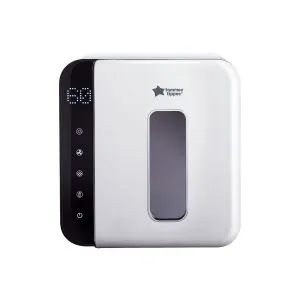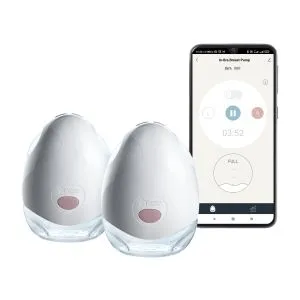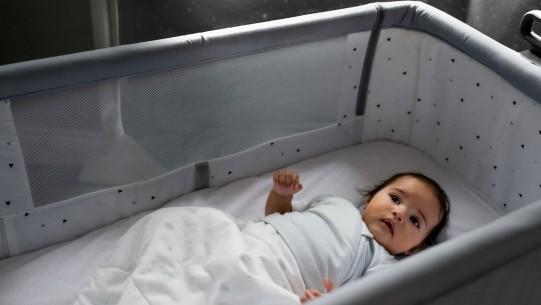
Tommee Tipps
A baby sleeping bag can keep your little one warm and snuggly. Read our guide to discover which togs to use when and how to safely use your sleep bag.
Our Guide to Choosing the Best Sleep Bag for Your Baby
Baby sleepbags are a great way to keep your little one safe and comfortable as they snooze.
They're available in all sorts of super cute designs and sizes, and also come in a range of weights and tog ratings for different seasons.
Read on to learn all about baby sleepbags, and which type is right for your baby.
What are the benefits of using a baby sleeping bag?
Lots of parents choose to dress their baby in a sleeping bag instead of using blankets or sheets which can pose a risk of suffocation and overheating. If you do use a lightweight blanket, make sure it's not tucked in higher than their shoulders and that they're in the "feet to foot" position, with their feet at the end of their crib or Moses basket.
Sleeping bags are basically wearable blankets for babies that keep them comfortable and at a safe temperature as they sleep. They are safer for little ones because there's no need for blankets, so their head remains safely uncovered, reducing the risk of suffocation.
The other benefits of baby sleeping bags include…
- They help baby to stay at a constant temperature.
- Your baby can move around in the bag but still stay covered and cosy.
- They're really handy for night feeds.
- They mean that there's no need for additional covers that baby could kick off or get tangled up in.
- They promote good sleep and become a recognisable part of your little one's bedtime routine.
What size sleeping bag should my baby wear?
Your baby's head shouldn't be able to pass through the neck hole when their sleepbag is fastened. If it can, the sleepbag is too big for them. Remember to check the weight of your child and refer to the chart below.
Remember, these are recommendations only as all babies are different…
| Sleepwear Size | Baby's Height | Baby's Weight |
| 0-3 Months | up to 62cm | 7-13lbs 8oz / 3.2-6.1kg |
| 3-6 Months | 62-68cm | 13lbs 8oz -18lbs / 6.1-8.2kg |
| 6-18 Months | 68-86cm | 18-25lbs / 8.2-11.3kg |
| 18-36 Months | 86-98cm | from 25lb / 11.3kg |
What tog should my baby wear?
Tog stands for Thermal Overall Grade. It’s a measure of warmth, rather than thickness. A product’s tog value is determined by a lab test. Basically, the higher the tog rating, the warmer the product.
The temperature of the room your baby sleeps in will influence the tog that's required. The pieces in our sleepwear range come in 3.5, 2.5, 1.0 and 0.2 tog.
Here's a breakdown of which tog should be worn when…
| Sleep Bag Tog | Room Temperature |
| 3.5 Tog | Designed for winter months and cold rooms below 14°C / 57°F |
| 2.5 Tog | Designed for year-round use and room temperatures between 14-20°C / 57°F-68°F |
| 1.0 Tog | Designed for warm summer months and room temperatures between 20-24°C / 57°F-75°F |
| 0.2 Tog | Designed for heatwaves, hot weather, and very warm room temperatures above 24°C / 75°F |
To see you from one season to the next, you might want a few sleepbags in different togs for each season.
What should my baby wear with their sleeping bag?
Generally, the warmer a room is, the less your baby needs to wear under their sleeping bag. Remember that all babies are different, and you'll soon learn what your little one is comfortable in.
To help you out, here's a rough guide to baby sleepwear and layering according to temperature…
| Room Temperature | Sleep Bag Tog | Clothing Under Sleep Bag |
| 27°C / 81°F and above | 0.2 Tog |
Nappy |
| 24-27°C / 75-81°F | 0.2 Tog |
Sleeveless Cotton Body Suit |
| 22-24°C / 72-75°F | 1.0 Tog |
or Sleeveless or Short Sleeved Cotton Body Suit |
| 20-22°C / 68-72°F | 1.0 Tog |
or
Short or Long Sleeved Cotton Body Suit |
| 18-20°C / 64-68°F | 2.5 Tog |
Long Sleeved Cotton Body Suit |
| 16-18°C / 61-64°F | 2.5 Tog |
or
Sleepsuit or Pyjamas |
| 14-16°C / 57-61°F | 2.5 Tog |
or
|
| 14-16°C / 57-61°F | 3.5 Tog |
or
or
Long Sleeved Cotton Body Suit or Sleepsuit or Pyjamas |
| 14°C / 57°F and under | 3.5 Tog |
or
Long Sleeved Cotton Body Suit and Sleepsuit or Long Sleeved Cotton Body Suit and Pyjamas |
Your baby shouldn’t become too warm in their sleeping bag, as long as you choose the correct tog for the room's temperature and they're not wearing too many layers underneath it.
If you can, choose a sleep bag with no sleeves or detachable sleeves, and don’t use any clothes or bedding that your little one could get tangled up in.
Signs a baby is too hot can include them…
- Feeling hot or sweaty to touch on their tummy, neck or back
- Having damp hair
- Flushing in the cheeks
- Increasing their breathing rate
To monitor their temperature, The Lullaby Trust suggests feeling “your baby’s chest or the back of their neck (your baby’s hands and feet will usually be cooler, which is normal). If your baby’s skin is hot or sweaty, remove one or more layers of bedclothes.”











